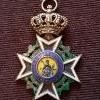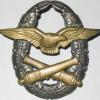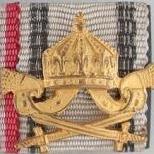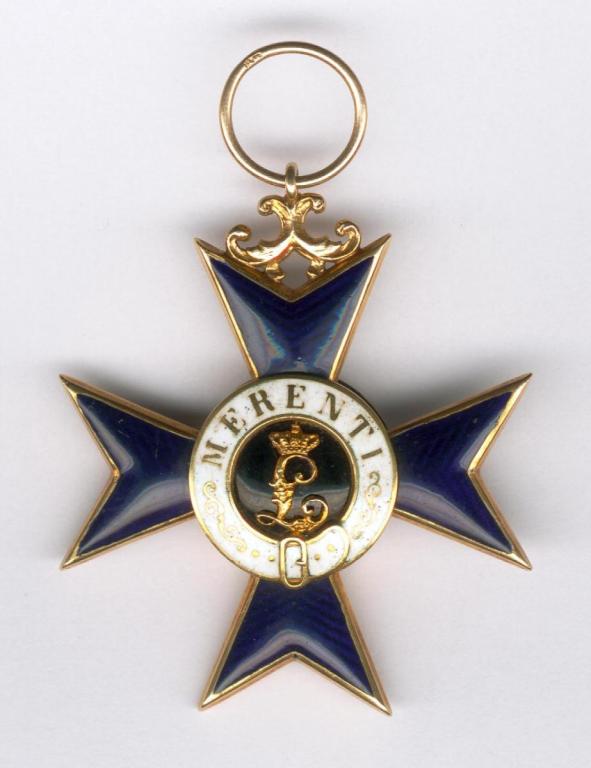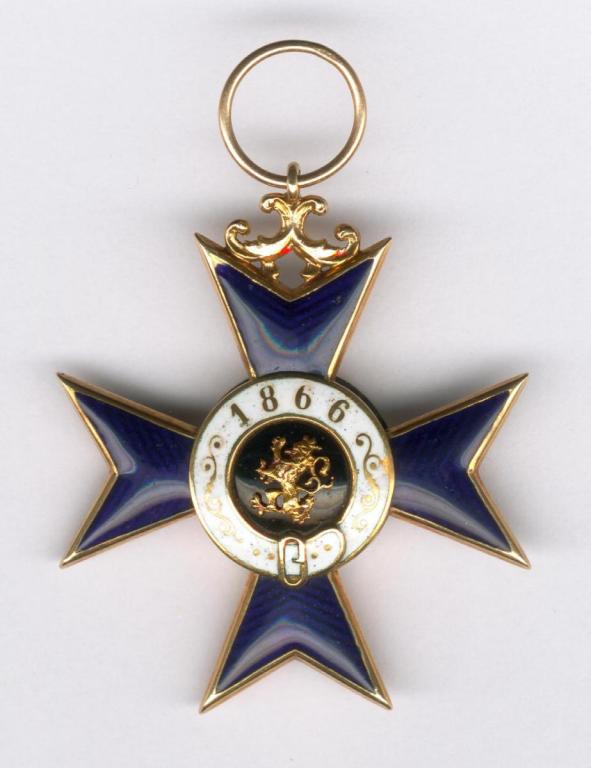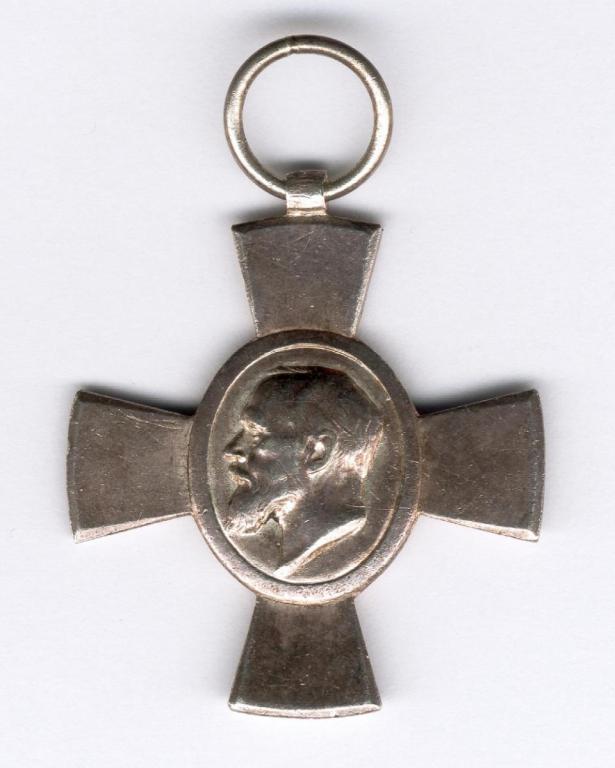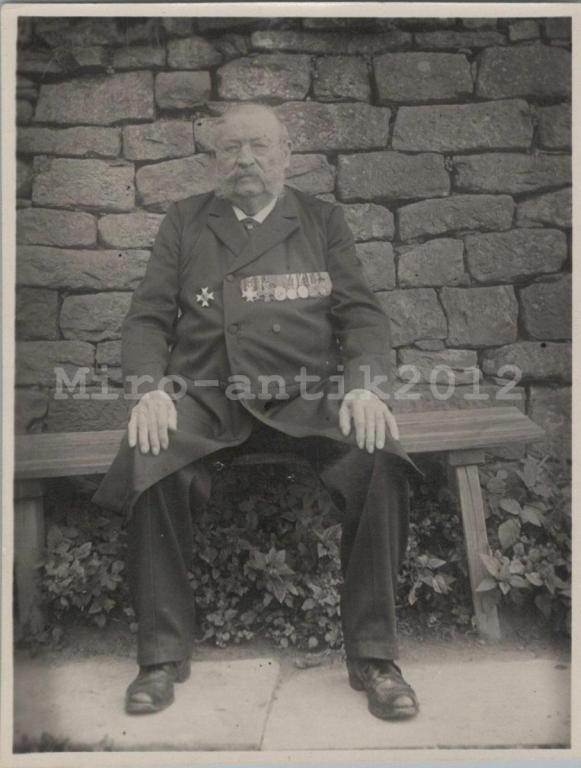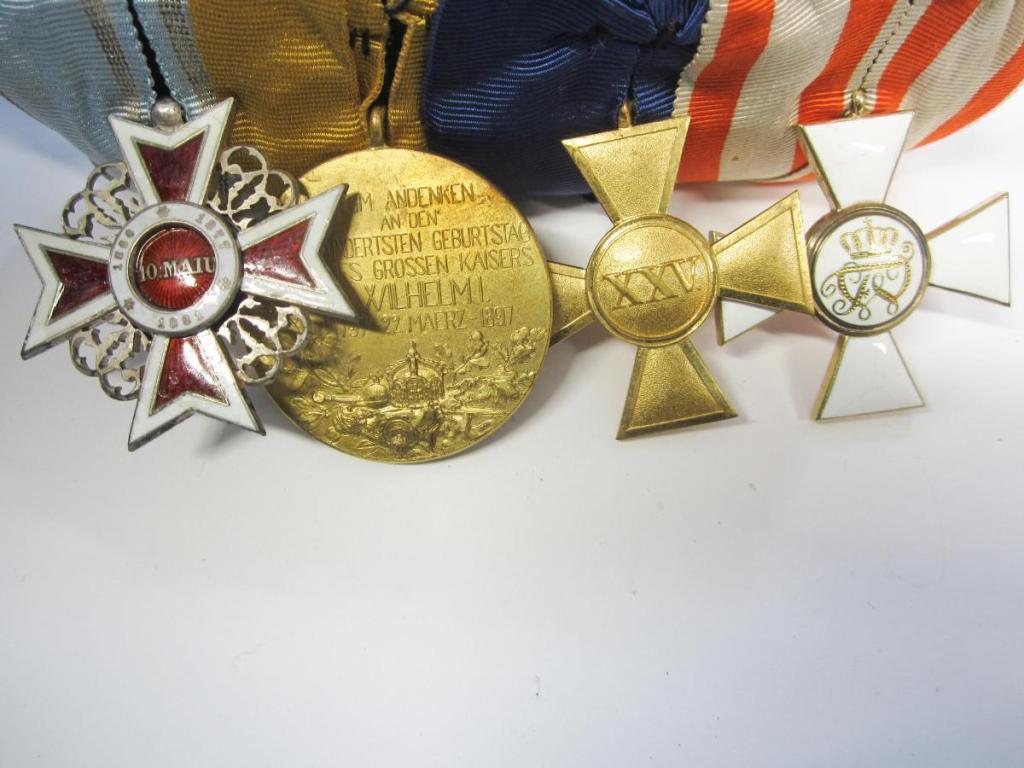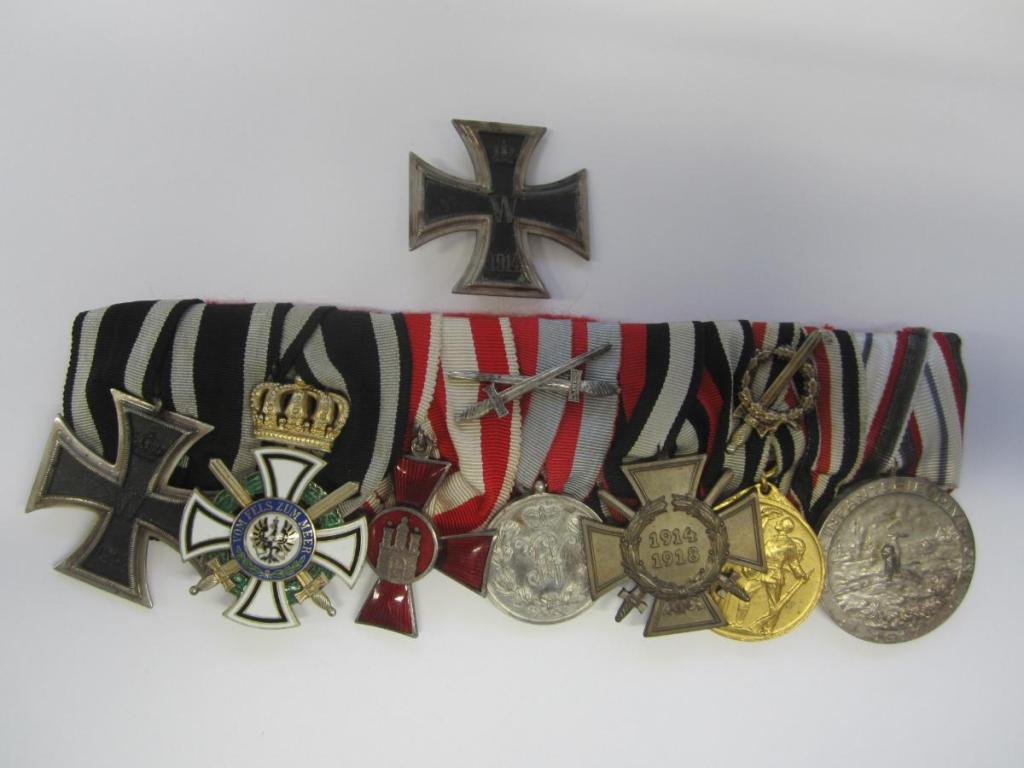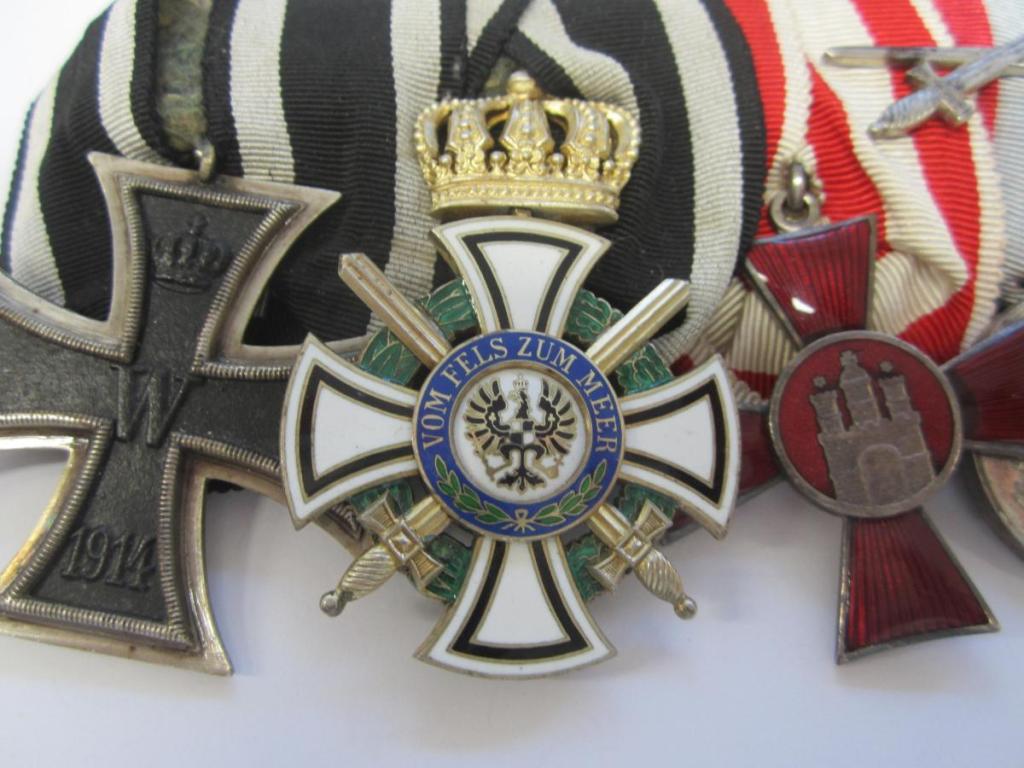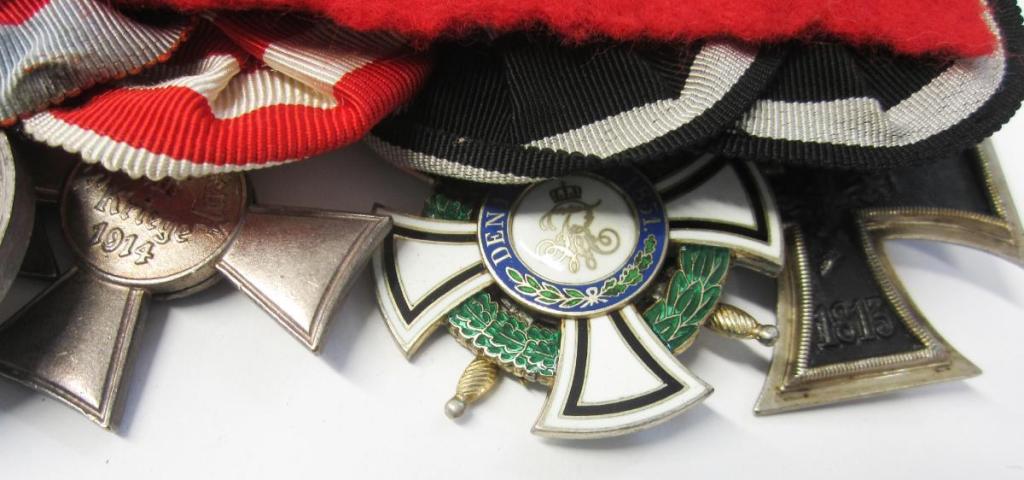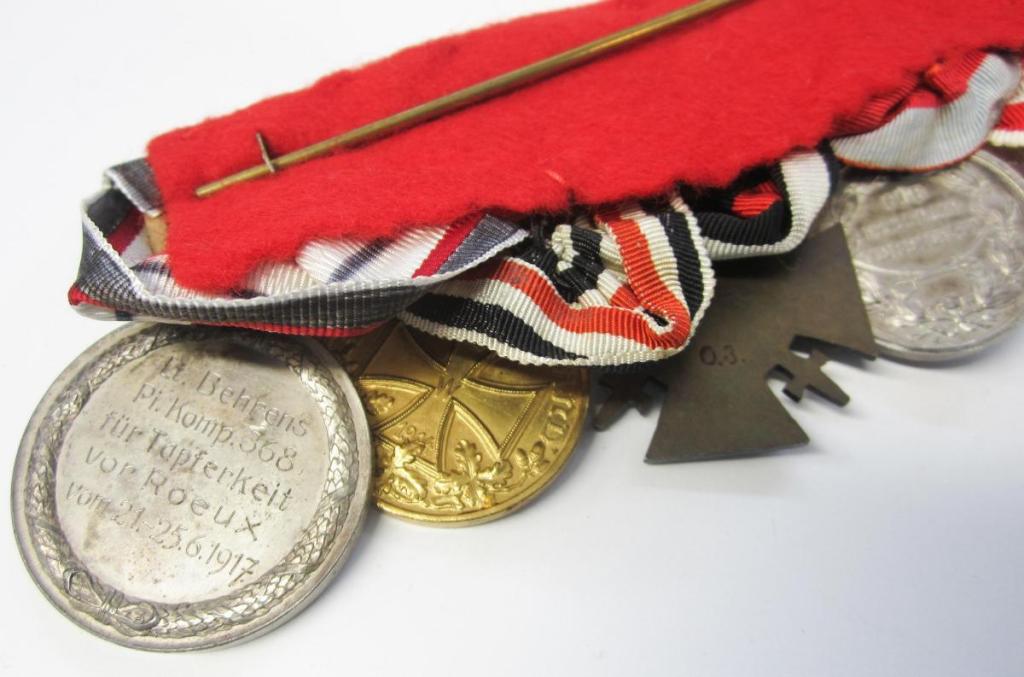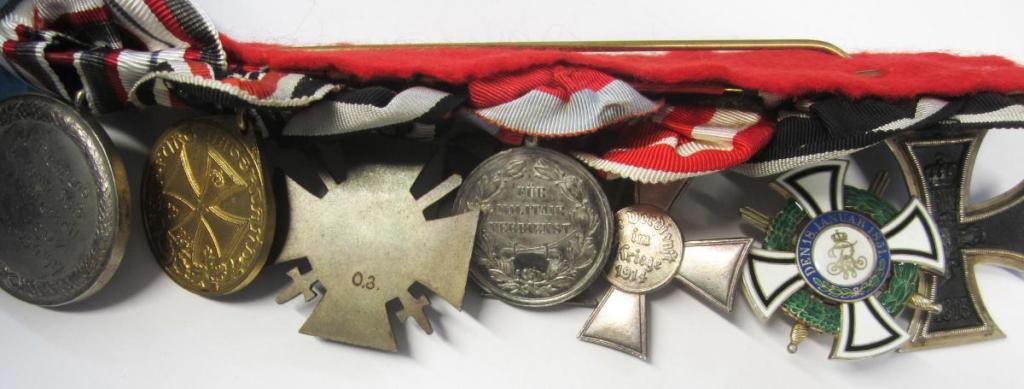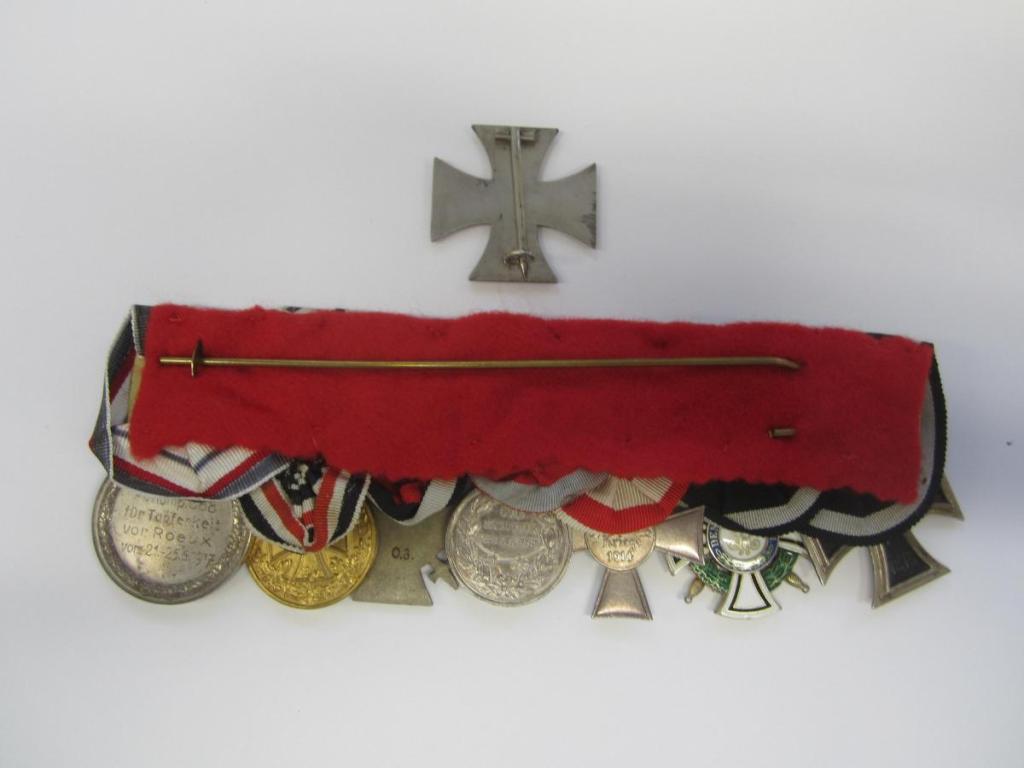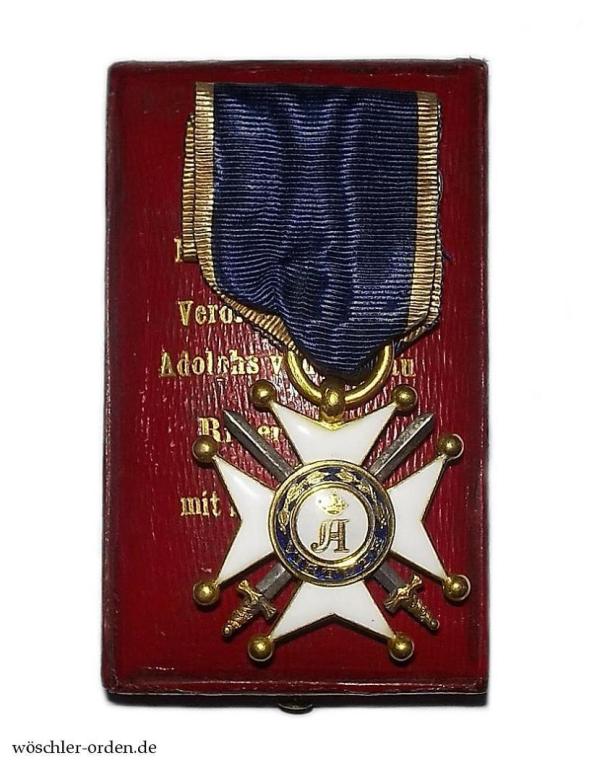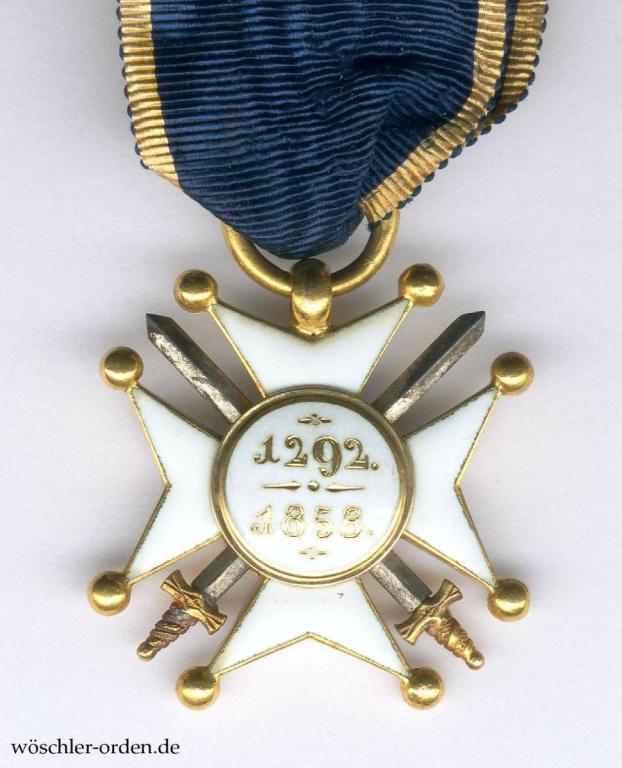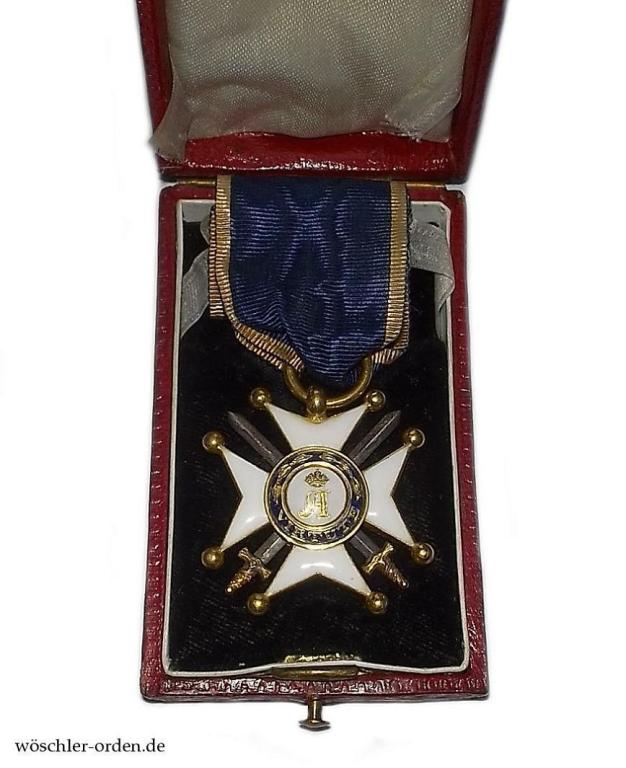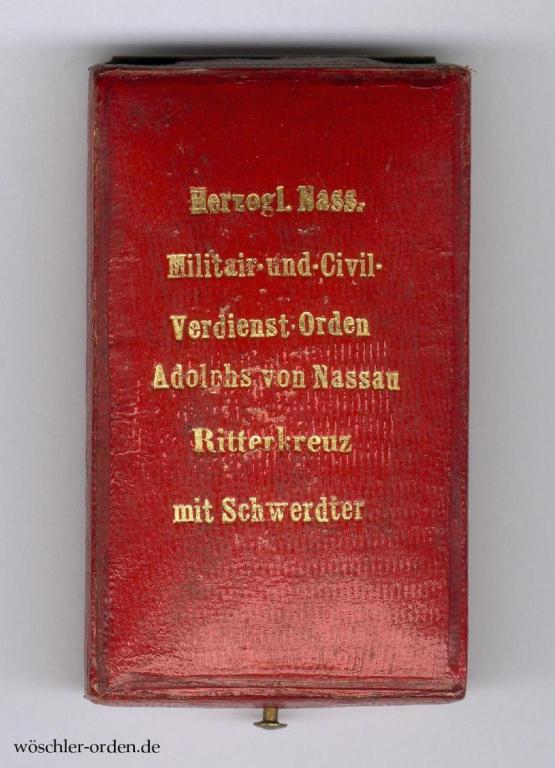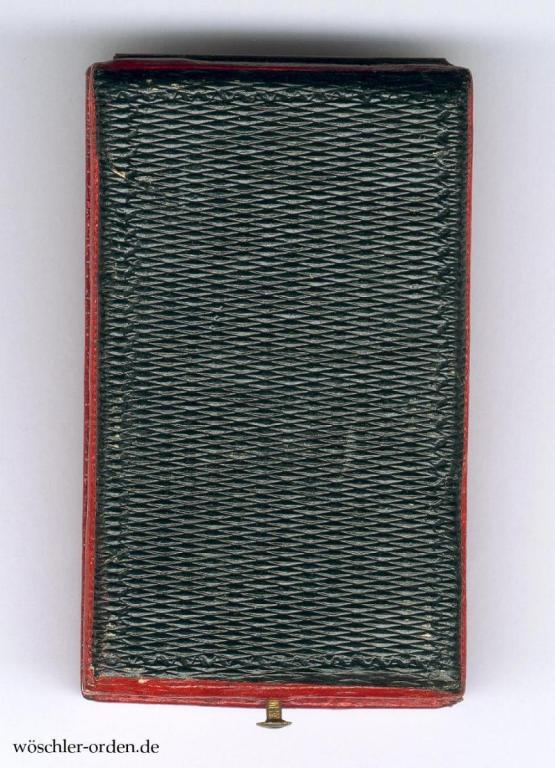-
Posts
3,086 -
Joined
-
Days Won
14
saschaw last won the day on November 6 2024
saschaw had the most liked content!
Contact Methods
-
Website URL
https://woeschler-orden.de/
Profile Information
-
Gender
Male
-
Location
Karlsruhe, Germany
-
Interests
Baden's awards
Recent Profile Visitors
7,469 profile views
saschaw's Achievements
-
Here's a knight's cross 2nd class, made by Adam Hausinger from Munich. Despite a total of more than 2,500 crosses without swords being awarded between 1866 and 1905, such crosses are quite hard to come by today. The explanation is rather simple: roughly 75% of these were returned and re-issued, altered or simply melted down, according to statistical works published by Bernd Döbel.
-
With support from the Research Gnome Community™, special thanks owed to Glenn and Daniel, I think I was able to attribute this unusual ribbon bar. In the early 1880s rank lists, only one officer wears a combination of EK2, KO4X, RAO4, DA and any Zähringer lion knight's cross with oak leaves and swords, with no other awards: Major Adolf Jouanne, in 1881 in Ulanen-Regiment No. 7. I'm having a gap in the Prussian ranklists, but my later Baden sources have him as "Oberst a. D.", and he seems to be dead by 1902. In total, he won three Zähringer lions grades: First, an "BZ3aX" in 1872, then additional oaks ("E") in 1877, and a final commanders' cross ("BZ2b") in 1883. Unter the revised 1879 statutes, this one would not replace the cross with swords, so he wore one on the neck and alongside one on the medal bar. Could someone confirm this attribution? Did he serve as Oberstleutnant in Ulanen-Regiment No. 2, or does the Schulterstück not belong to the bar? Also, might someone have a picture of this man, with or without his medals? I don't dare to dream of a picture with exactly this ribbon bar in wear...
-
Have the past eight years brought a solution to this riddle? I agree with ixhs' assumption: Due to the lack of a long service award, this group is most likely to a civilian, who only happened to be a soldier during the Franco-Prussian war. My best guess would be something like a factory owner. Given none of the foreign awards is extremely uncommon, I think it's difficult or impossible to find him via the Deutscher Ordens-Almanach. But who knows, this might be solved by chance, if maybe a named photograph with exactly this group in wear appears. My fingers are crossed!
-
Thanks, Dave, this is most interesting! Henning Volle, in his 2014 Stiftungen und Erneuerungen von deutschen Orden und Ehrenzeichen im Ersten Weltkrieg, p. 129/130, quotes or paraphrases said princely decree, but he does not mention the swords. So, I'm hearing for the first time they were a "real thing" in the Schwarzburg principalities! Again, thanks for this addition!
-
I had seen this and wanted to obtain it for my collection, but then I had some technical difficulties at the critical moment, a few seconds before the offer's end. Given the current market, I don't think it was very expensive, and was to place a significantly higher bid... well, good for the buyer! Not to be over-precise, but none of them were "civil". They were peace-time, albeit awarded to a military. Also, the Albrecht was actually "only" a commander's cross, but that can only be distinguished by provenience, not the piece itself. The seller also had a Saxe-Ernestine house order commander's breast star and a Mecklenburg Griffin order officers' cross. This combination was enough to attribute the medals with some certainty to one individual, even before the ribbon bar appeared. It did confirm the assumption. The group can be attributed to a Prussian Generalleutnant, but given we don't know who obtained this ribbon bar, I do not simply want to publish the name.
-
I'm not familiar with working with the Gotha, but had a closer look now: this v. Schlieffen is listed as an "Rr", simply "Ritter" of the Johanniterorden, while others are given as "RRr", that's "Rechtsritter", or "ERr", "Ehrenritter". I'm intrigued by this level of detail exhibited by the Genealogisches Taschenbuch!
-
Concerning the English-speaking world, you already arrived at the probably best place to be. The combined knowledge here on GMIC, that I'm sure of, beats what any homepage and even the majority of printed specialized literature can offer. Make yourself at home! Only recently I stumbled upon the auction, but in fact, it has been almost two years. The group sold in Bonhams of London 5 October 2021 sale. I took the liberty to add their pictures to this thread, so VtwinVince's request for better pictures might already be met.
-
I recently noticed we never had a collective thread for the awards of the Duchy of Nassau, possibly because most awards of this petty state are so uncommon we hardly ever see anything but their last war medal, called "Feldzeichen für 1866". As a "starter", I picked a knight's cross with swords of the "Herzoglich Nassauischer Militär- und Zivil-Verdienstorden Adolphs von Nassau". The piece that came in its authentic case was awarded to a Baden regimental doctor, who would later become the highest ranking medical officer in the Prussian army, Bernhard (later: von) Beck (1821–1894). He received this decoration in 1858. It's noteworthy the Duke of Nassau awarded his merit order generally with swords if the recipient was military. That's nothing unheard of, see the Grand Duchy of Hesse or the Kingdom of Hanover, but certainly not the rule within the German states.


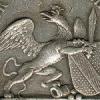
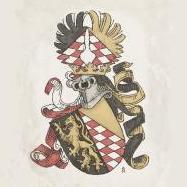
.thumb.jpg.4c35d31f4ed0f1301c2f7105eb5f2a2e.jpg)



_svg.thumb.png.703d44b23684e778f11e2dbb6fdcd1dd.png)
